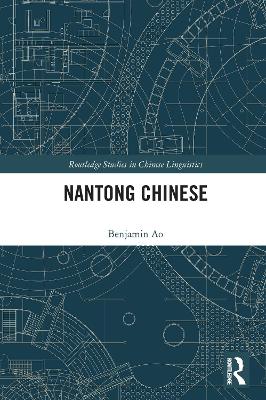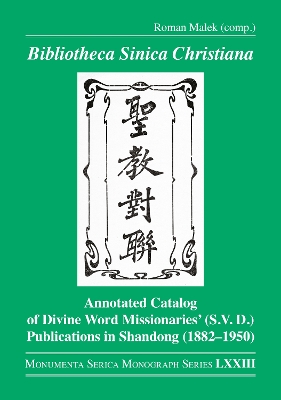Nantong Chinese
 portes grátis
portes grátis
Nantong Chinese
Ao, Benjamin
Taylor & Francis Ltd
08/2022
220
Mole
Inglês
9780367557799
15 a 20 dias
400
Descrição não disponível.
Table of Contents
List of Figures
List of Tables
Foreword
Preface
Acknowledements
General Information
1. Geological History
2. Administrative History
3. Demographic History
4. Dialects in Greater Nantong
5. Usage and Peculiarities
6. Vitality and Endangerment
7. Previous Research
The Sound System
1. The Syllable
2. The Consonants
3. The Vowels
4. The Suprasegmentals
5. Phonotactics and Distribution
6. Phones and Phonemes
Sounds That Change
1. Segmental Change
2. Tone Sandhi
3. Prosodic Hierarchy
Journey from the Past
1. The Middle Chinese Sound System
2. Phonetic Correspondence
3. Seeking Patterns from Chaos
4. Regular Sound Changes
5. Irregular Sound Changes
6. Reading and Colloquial Pronunciation
Place in the Family
1. Subgrouping of Chinese Dialects
2. Nantong Chinese Is No Mandarin
3. The Tong-Tai-Hui Dialect Group
4. The Tongzhou Sprachbund
The Writing System
1. Sample Texts
2. The Challenges
3. The Quest for Authenticity
4. A Phonetic Script
The Vocabulary
1. Previous Studies
2. Language Contact and Loan Words
3. Sources of Dialectal Words
Words and Word Classes
1. Parts of Speech
2. Nouns and Pronouns
3. Number, Case and Class
4. Adjectives, Numerals and Classifiers
5. Verbs
6. Tense, Mood, Voice and Aspect
7. Function Words
Phrases and Sentences
1. Types of Phrases
2. Transformation
3. Sentence Definition
4. Speech Act Markers
5. Basic Sentence Types
6. Special Constructs
7. Negative Sentences
8. Interrogative Sentences
9. Focus and Focalization
A Literary Sampler
1. A Lullaby
2. Children's Rhymes
3. Love Songs
4. Narrative Poems
5. Fairy tales
6. A Glossary
Index
List of Figures
List of Tables
Foreword
Preface
Acknowledements
General Information
1. Geological History
2. Administrative History
3. Demographic History
4. Dialects in Greater Nantong
5. Usage and Peculiarities
6. Vitality and Endangerment
7. Previous Research
The Sound System
1. The Syllable
2. The Consonants
3. The Vowels
4. The Suprasegmentals
5. Phonotactics and Distribution
6. Phones and Phonemes
Sounds That Change
1. Segmental Change
2. Tone Sandhi
3. Prosodic Hierarchy
Journey from the Past
1. The Middle Chinese Sound System
2. Phonetic Correspondence
3. Seeking Patterns from Chaos
4. Regular Sound Changes
5. Irregular Sound Changes
6. Reading and Colloquial Pronunciation
Place in the Family
1. Subgrouping of Chinese Dialects
2. Nantong Chinese Is No Mandarin
3. The Tong-Tai-Hui Dialect Group
4. The Tongzhou Sprachbund
The Writing System
1. Sample Texts
2. The Challenges
3. The Quest for Authenticity
4. A Phonetic Script
The Vocabulary
1. Previous Studies
2. Language Contact and Loan Words
3. Sources of Dialectal Words
Words and Word Classes
1. Parts of Speech
2. Nouns and Pronouns
3. Number, Case and Class
4. Adjectives, Numerals and Classifiers
5. Verbs
6. Tense, Mood, Voice and Aspect
7. Function Words
Phrases and Sentences
1. Types of Phrases
2. Transformation
3. Sentence Definition
4. Speech Act Markers
5. Basic Sentence Types
6. Special Constructs
7. Negative Sentences
8. Interrogative Sentences
9. Focus and Focalization
A Literary Sampler
1. A Lullaby
2. Children's Rhymes
3. Love Songs
4. Narrative Poems
5. Fairy tales
6. A Glossary
Index
Este título pertence ao(s) assunto(s) indicados(s). Para ver outros títulos clique no assunto desejado.
Tone Sandhi;Nantong Sinitic language;Glottal Vowel;Mandarin dialect;Fricative Vowels;Chinese dialects;Dialectal Words;unique linguistic system;Yangtze River;Sentence Final Particles;Glottal Stop;Neighboring Dialects;Toneless Syllable;Lexical Tone;Mark 1;Shanghai Chinese;Prosodic Hierarchy;Mandarin Dialects;Mandarin;Toned Syllable;Coda Consonant;Disyllabic Words;Wu Dialects;Metrical Foot;Nasal Vowels;Gan Dialect;Trisyllabic Word;Nantong City;Low Level Tone
Table of Contents
List of Figures
List of Tables
Foreword
Preface
Acknowledements
General Information
1. Geological History
2. Administrative History
3. Demographic History
4. Dialects in Greater Nantong
5. Usage and Peculiarities
6. Vitality and Endangerment
7. Previous Research
The Sound System
1. The Syllable
2. The Consonants
3. The Vowels
4. The Suprasegmentals
5. Phonotactics and Distribution
6. Phones and Phonemes
Sounds That Change
1. Segmental Change
2. Tone Sandhi
3. Prosodic Hierarchy
Journey from the Past
1. The Middle Chinese Sound System
2. Phonetic Correspondence
3. Seeking Patterns from Chaos
4. Regular Sound Changes
5. Irregular Sound Changes
6. Reading and Colloquial Pronunciation
Place in the Family
1. Subgrouping of Chinese Dialects
2. Nantong Chinese Is No Mandarin
3. The Tong-Tai-Hui Dialect Group
4. The Tongzhou Sprachbund
The Writing System
1. Sample Texts
2. The Challenges
3. The Quest for Authenticity
4. A Phonetic Script
The Vocabulary
1. Previous Studies
2. Language Contact and Loan Words
3. Sources of Dialectal Words
Words and Word Classes
1. Parts of Speech
2. Nouns and Pronouns
3. Number, Case and Class
4. Adjectives, Numerals and Classifiers
5. Verbs
6. Tense, Mood, Voice and Aspect
7. Function Words
Phrases and Sentences
1. Types of Phrases
2. Transformation
3. Sentence Definition
4. Speech Act Markers
5. Basic Sentence Types
6. Special Constructs
7. Negative Sentences
8. Interrogative Sentences
9. Focus and Focalization
A Literary Sampler
1. A Lullaby
2. Children's Rhymes
3. Love Songs
4. Narrative Poems
5. Fairy tales
6. A Glossary
Index
List of Figures
List of Tables
Foreword
Preface
Acknowledements
General Information
1. Geological History
2. Administrative History
3. Demographic History
4. Dialects in Greater Nantong
5. Usage and Peculiarities
6. Vitality and Endangerment
7. Previous Research
The Sound System
1. The Syllable
2. The Consonants
3. The Vowels
4. The Suprasegmentals
5. Phonotactics and Distribution
6. Phones and Phonemes
Sounds That Change
1. Segmental Change
2. Tone Sandhi
3. Prosodic Hierarchy
Journey from the Past
1. The Middle Chinese Sound System
2. Phonetic Correspondence
3. Seeking Patterns from Chaos
4. Regular Sound Changes
5. Irregular Sound Changes
6. Reading and Colloquial Pronunciation
Place in the Family
1. Subgrouping of Chinese Dialects
2. Nantong Chinese Is No Mandarin
3. The Tong-Tai-Hui Dialect Group
4. The Tongzhou Sprachbund
The Writing System
1. Sample Texts
2. The Challenges
3. The Quest for Authenticity
4. A Phonetic Script
The Vocabulary
1. Previous Studies
2. Language Contact and Loan Words
3. Sources of Dialectal Words
Words and Word Classes
1. Parts of Speech
2. Nouns and Pronouns
3. Number, Case and Class
4. Adjectives, Numerals and Classifiers
5. Verbs
6. Tense, Mood, Voice and Aspect
7. Function Words
Phrases and Sentences
1. Types of Phrases
2. Transformation
3. Sentence Definition
4. Speech Act Markers
5. Basic Sentence Types
6. Special Constructs
7. Negative Sentences
8. Interrogative Sentences
9. Focus and Focalization
A Literary Sampler
1. A Lullaby
2. Children's Rhymes
3. Love Songs
4. Narrative Poems
5. Fairy tales
6. A Glossary
Index
Este título pertence ao(s) assunto(s) indicados(s). Para ver outros títulos clique no assunto desejado.
Tone Sandhi;Nantong Sinitic language;Glottal Vowel;Mandarin dialect;Fricative Vowels;Chinese dialects;Dialectal Words;unique linguistic system;Yangtze River;Sentence Final Particles;Glottal Stop;Neighboring Dialects;Toneless Syllable;Lexical Tone;Mark 1;Shanghai Chinese;Prosodic Hierarchy;Mandarin Dialects;Mandarin;Toned Syllable;Coda Consonant;Disyllabic Words;Wu Dialects;Metrical Foot;Nasal Vowels;Gan Dialect;Trisyllabic Word;Nantong City;Low Level Tone







